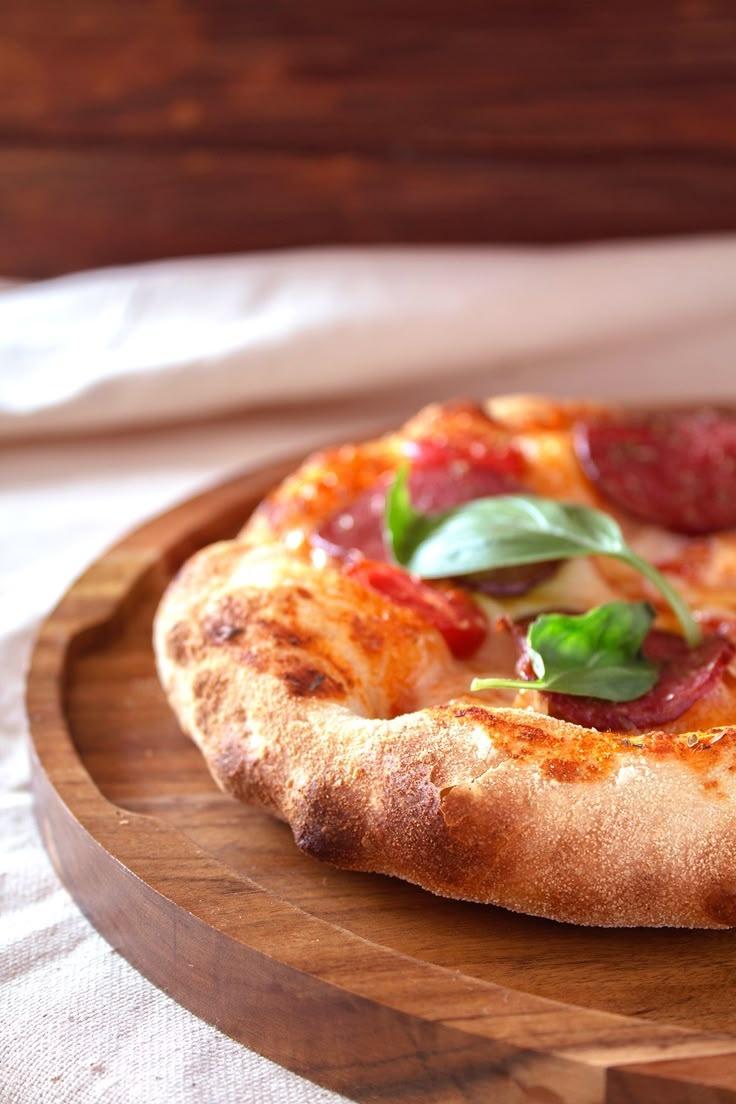Here at ForkShelter, our philosophy upholds the notion that incredible pizza begins with incredible dough. With over 30 years spent refining our recipe, we're thrilled to divulge a few trade secrets. While the precise recipe remains a cherished trade secret, these guidelines will aid you in producing pizza dough of a professional standard in your own kitchen.
Importance of Flour Quality
A prerequisite for excellent pizza dough is premium flour. 00 flour, known for its fine grind and optimal protein level, is what we advise—with about 12%, it yields dough that's both robust and supple. Should 00 flour be unavailable, a decent stand-in would be bread flour, albeit resulting in a marginally altered texture.
Managing Water Temperature and Dough Hydration
The water's warmth significantly influences the dough's development and the time it takes to ferment. Employ cold water around 45°F (7°C) for prolonged fermentation, which is key to enhancing taste. Warm water at roughly 85°F (29°C) will speed up fermentation. The dough's hydration rate, meaning the water to flour ratio, should stay within the range of 60-70% for optimal consistency in common household ovens.
Yeast Usage and Fermenting Time
For dough with rich flavor, the secret lies in minimal yeast and extended fermentation. We use a scant 0.2% of fresh yeast by flour weight, which we then allow to ferment for 24-48 hours. This gradual process fosters complex flavors to emerge and yields a more digestible dough.
Salt’s Role: Beyond Taste
Beyond seasoning, salt bolsters the gluten network and moderates fermentation. Employing fine sea salt at a rate of 2.5-3% in proportion to flour weight is recommended. Introduce it after mixing water with flour to prevent it from prematurely interacting with the yeast.
Fermentation Craft
After blending, let your dough undergo a primary fermentation at ambient temperature for a couple of hours, followed by dividing it into separate portions for balls of dough. Stow these in lidded containers and refrigerate for one to three days. It's during cold fermentation that the transformation occurs—enzymes decompose starches into simpler sugars, which contributes to flavor and yields the crust's characteristic caramelization.
Gentle Handling Techniques
Prior to pizza preparation, let the dough come to room temperature by resting it for an hour or two beforehand. Take care to delicately handle the dough to maintain the developed air bubbles. Opt for gentle pressing and stretching with your fingers rather than rolling it out, which squanders those essential air pockets.
Critical: Heating Intricacies
Though our pizza kilns can reach up to 850°F (454°C), most kitchen ovens have a limit of about 550°F (288°C). To mimic the necessary intense heat, preheat a pizza stone or steel for a minimum of one hour. This mimics the powerful bottom heat required for that perfectly crisp crust and fluffy center.
Perfecting pizza dough is more about the journey than the endpoint. Each attempt imparts fresh insights about dough craftsmanship. Experiment with different approaches, keep a record, and decipher what fits your kitchen best.
To witness dough craft firsthand, attend a pizza workshop where Chef Julian showcases these methods comprehensively. For upcoming workshop dates, see our events schedule!

